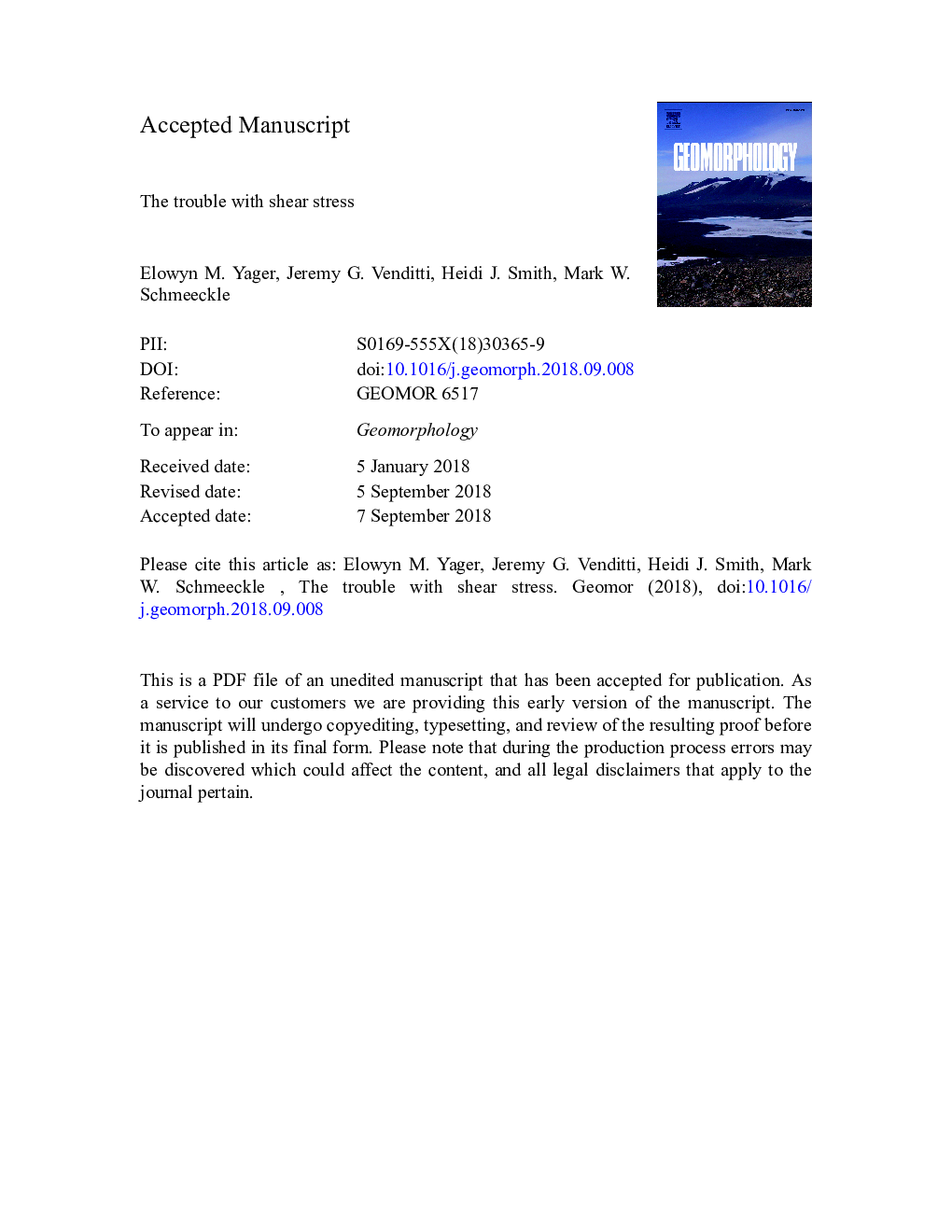| کد مقاله | کد نشریه | سال انتشار | مقاله انگلیسی | نسخه تمام متن |
|---|---|---|---|---|
| 10224260 | 1701090 | 2018 | 46 صفحه PDF | دانلود رایگان |
عنوان انگلیسی مقاله ISI
The trouble with shear stress
ترجمه فارسی عنوان
مشکل با استرس برش
دانلود مقاله + سفارش ترجمه
دانلود مقاله ISI انگلیسی
رایگان برای ایرانیان
کلمات کلیدی
استرس برشی، حمل و نقل رسوب، سرعت جریان
موضوعات مرتبط
مهندسی و علوم پایه
علوم زمین و سیارات
فرآیندهای سطح زمین
چکیده انگلیسی
Predicted bedload fluxes often have large errors partly because calculations usually do not include spatial and temporal flow variability. Sediment motion is driven by a temporal distribution of applied fluid forces, which are often simplified into time-averaged flow velocities or shear stresses in sediment transport equations. Spatial variations in these flow parameters are also often neglected. Given the nonlinearities in the relation between flow and sediment flux, the reach-averaged sediment flux calculated with an average velocity or shear stress will not necessarily equal the measured spatially averaged bedload flux. Such spatial and temporal flow variations are ignored with the commonly used reach-averaged shear stress (Ïds) that is a function of the flow depth and channel slope. To demonstrate the uncertainties with using reach-averaged shear stresses, and even local shear stresses, to predict bedload transport rates, we have three goals. First, we outline the derivations and assumptions involved with commonly used estimates of shear stress. Second, we summarize the literature on the uncertainties involved with using shear stress, and other space- and time-averaged flow parameters, to predict sediment flux. Third, we use a new data set from experiments to add further support to a growing body of literature that suggests Ïds may not be linked to the mechanics of bedload transport. We show considerable uncertainties exist in estimating a reach-averaged shear stress, by comparing Ïds and near-bed shear stresses calculated from velocity profiles, Reynolds stresses, and local turbulence. For example, Ïds was systematically greater than these near-bed stresses even for experiments without large bed roughness. We also find that correlations between local time-averaged sediment fluxes and local Reynolds stresses or turbulence intensities are relatively poor. The near-bed, time-averaged local flow velocity has the strongest relation with the time-averaged local bedload flux because it is closely related to the forces that actually drive sediment transport. However, sediment transport rates in individual experiments could still vary by orders of magnitude for a given value of this flow velocity, suggesting that additional work is needed to identity a parameter, or distributions of parameters, that will best predict sediment fluxes.
ناشر
Database: Elsevier - ScienceDirect (ساینس دایرکت)
Journal: Geomorphology - Volume 323, 15 December 2018, Pages 41-50
Journal: Geomorphology - Volume 323, 15 December 2018, Pages 41-50
نویسندگان
Elowyn M. Yager, Jeremy G. Venditti, Heidi J. Smith, Mark W. Schmeeckle,
